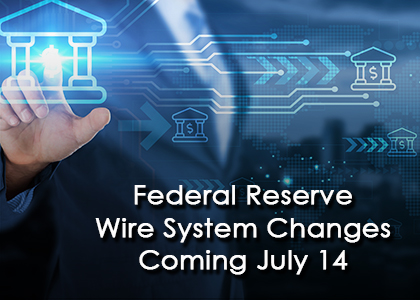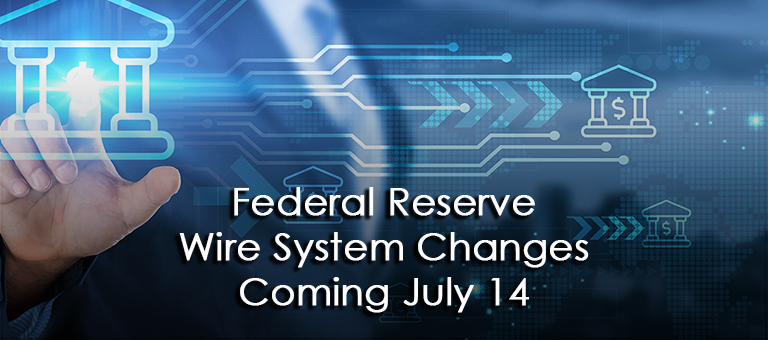


Understanding Wire System Changes (ISO 20022) and Its Impact on Your Banking Experience
As the global financial landscape evolves, our bank is committed to keeping you informed about important changes that can impact your banking and business operations. One such significant change is the adoption of ISO 20022, a new global standard for financial messaging.
On Monday, July 14, the Federal Reserve will implement ISO 20022, the standard for sending and receiving wires.
|
What you should know to be prepared: |
What is ISO 20022?
ISO 20022 is an international standard developed to enhance the way financial institutions communicate with each other. It provides a common language for financial transactions, ensuring that data is exchanged in a consistent and structured manner. This standard uses XML format, which allows for more detailed and accurate information to be included in each transaction.
Why is ISO 20022 Important?
The adoption of ISO 20022 is set to revolutionize the financial industry by improving the efficiency, security, and transparency of financial transactions. Here are some key benefits:
- Enhanced Data Quality: ISO 20022 allows for richer data to be included in financial messages, reducing errors and improving the accuracy of transactions.
- Improved Efficiency: The standardization of financial messaging streamlines processes, reducing the time and resources required to process transactions.
- Greater Transparency: With more detailed information available, financial institutions can provide better insights and reporting to their customers.
How Will ISO 20022 Impact Your Banking and Business?
The transition to ISO 20022 will bring several benefits to our customers:
- Faster Payments: The new standard will enable quicker processing of payments, ensuring that funds are transferred more rapidly and efficiently.
- Better Reconciliation: Businesses will benefit from more straightforward reconciliation processes due to the inclusion of comprehensive remittance information with each payment.
- Enhanced Customer Experience: With improved data quality and transparency, customers can expect a more seamless and reliable banking experience.



